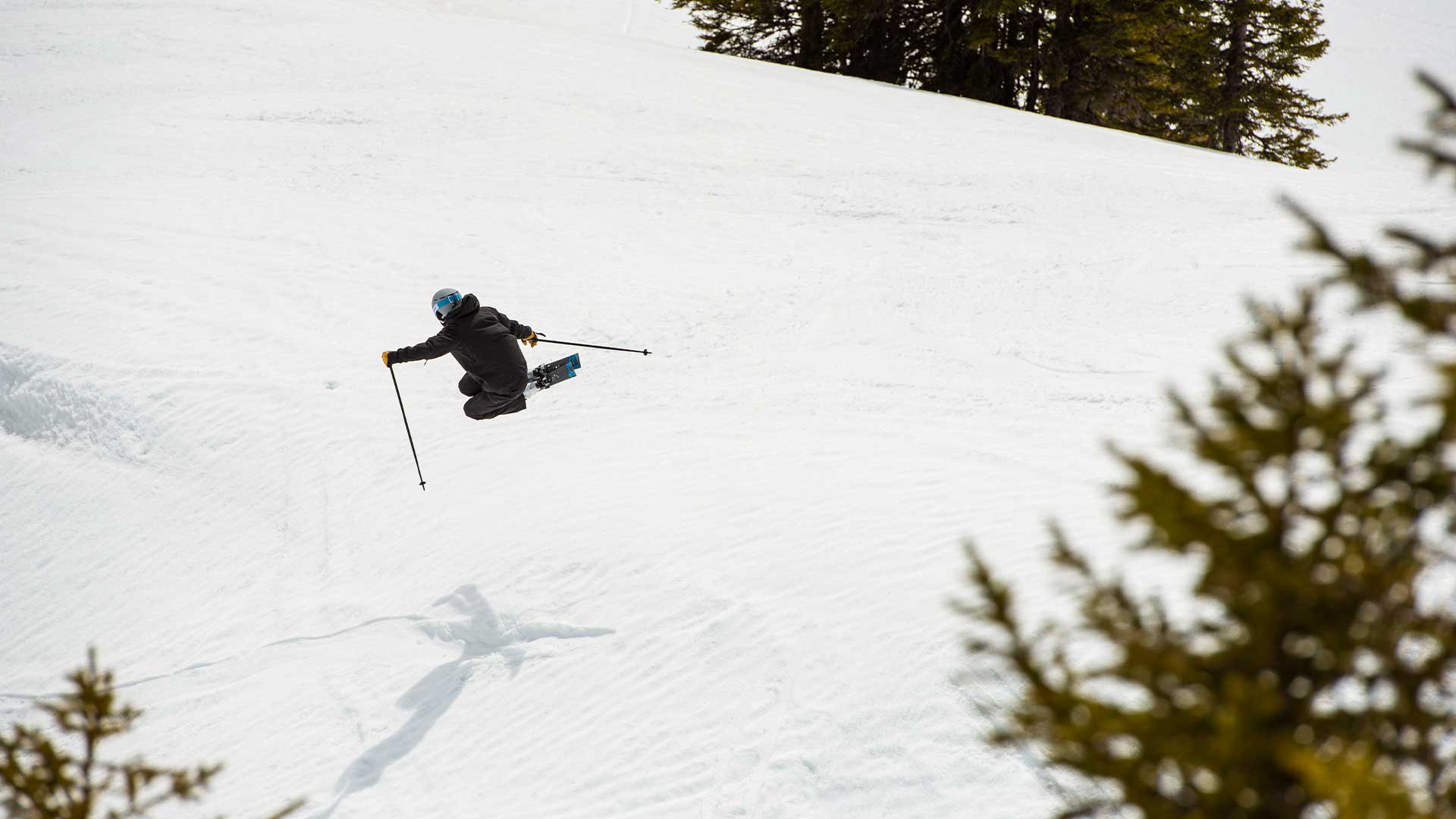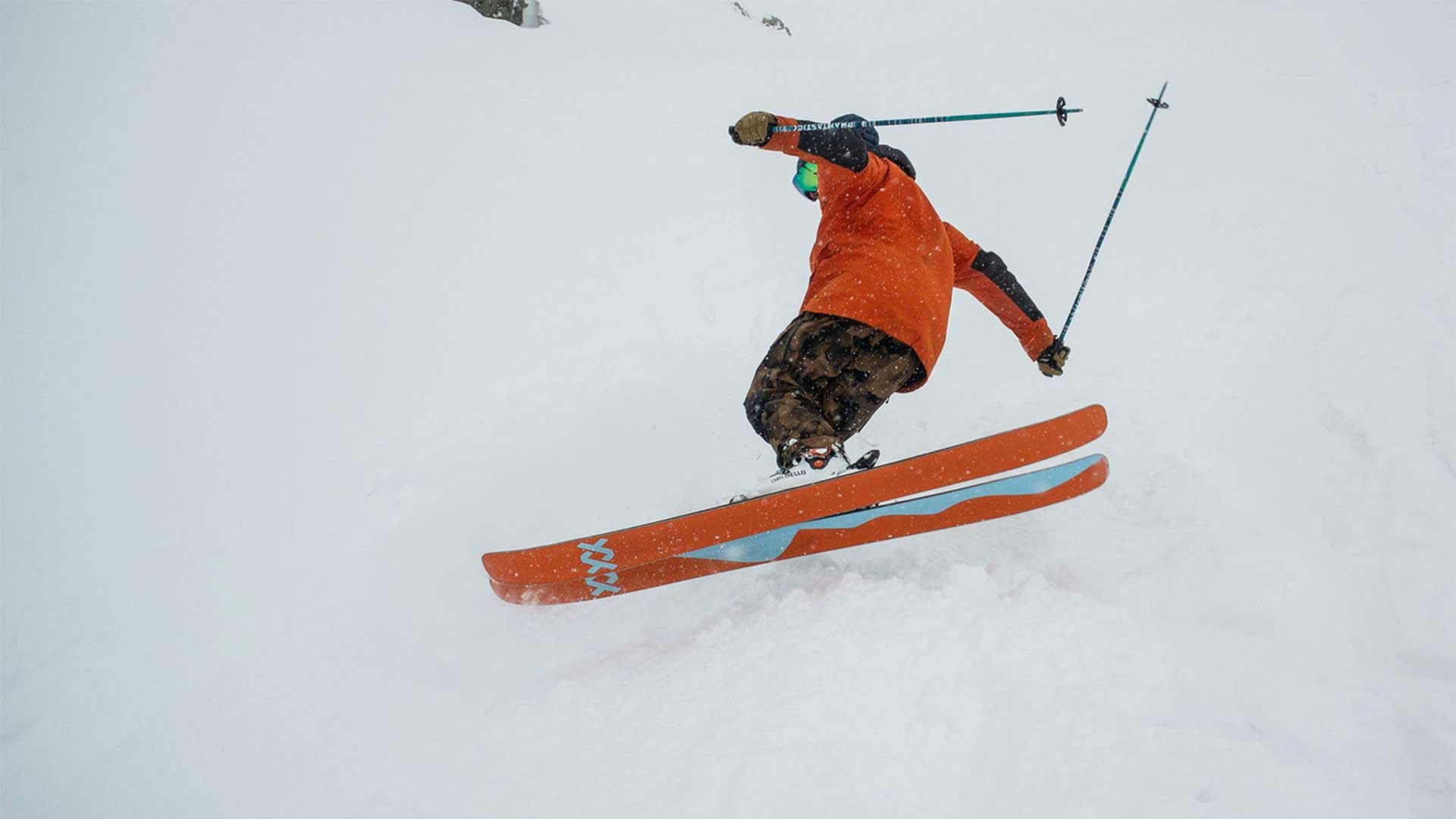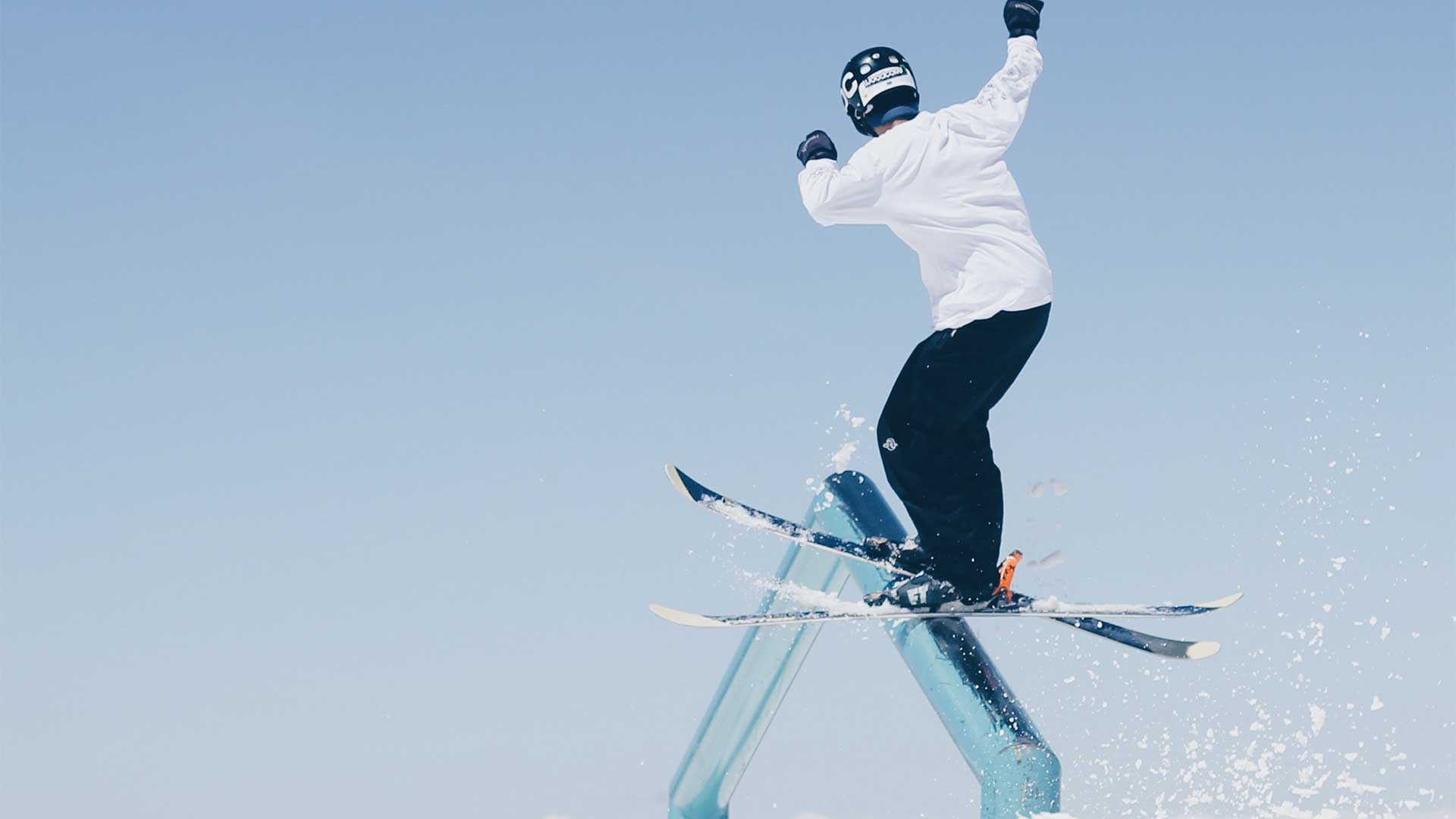Mastering the following beginner ski tricks might not make you the next Candide, but they’ll certainly pump your style points while you’re out shredding the pistes with your mates. And, yes, learning freestyle skiing can at first feel like a daunting task at first, but, by slowly progressing through the following ski tricks, we bet you’ll be brimming with confidence before you can say twin tips.

Pop (aka straight air)
The most underrated (but most important) skill you can master.
Flex your ankles, knees, and hips as you ski up the kicker (it can help to think about pressurising your shins against your boot buckles). As you approach the take-off, release the pressure by extending your ankles, knees, and hips.
If this sounds simply like jumping to you, that’s because it is – you do actually need to jump off the kicker in order to remain balanced in the air. As a former coach once told me “if you do nothing, the jump controls you. If you pop, you take control of the jump.”
Tips
- Think about feeling the kicker underneath the soles of your feet and pushing off it. This helps achieve the ankle, knee, and hip extension required for a strong pop (and will help you avoid absorbing the jump, which happens when you remain in a flexed position).

Safety grab
You’ve mastered the straight air, now it’s time to make it look good. Park skiers live by the motto “no grab, no trick”. In other words, you’ve got to throw in a grab to truly master a trick. To get started, opt for the simplest and most humble of grabs: the safety grab.
With whichever hand feels most comfortable, reach under your boot and grab (i.e. hold) the outside edge and base of your ski.
Tips:
- It’s tempting to focus on the grab and forget about the pop. Separate the trick into two stages: first pop, then grab.
- Reaching down to grab your ski will tip you off balance. Instead, work your abs to bring your knees and legs towards your chest, which will minimise unwanted upper body movement.
360
The classic spin that feels great, looks great, and confirms that you’re a now fully-fledged park rat.
As you approach the take-off, slightly rotate your shoulders in the opposite direction that you want to spin (this is called ‘winding-up’). On the take-off, pop and bring your shoulders square to the landing. Now, let your legs, hips, shoulders, and head rotate in a fluid motion (in whichever direction you want to spin).
As you rotate, be aware of your spin checkpoints: at 180 degrees continue looking towards the landing direction; notice that you’re passing 270 degrees and re-approaching the landing direction; and voilà, you’ve reached 360!
Tips:
- A wide ski stance (just over shoulder width apart) on take-off provides extra grip for setting-up your rotation and added stability in the air. Keeping your arms out beside you (as if you’re holding a hula-hoop) also maintains stability.
- Keep a horizontal eyeline while spinning. Avoid the classic mistake of looking down over your shoulder towards the jump or your feet, which tilts you off balance and increases the likelihood of a backseat landing.






